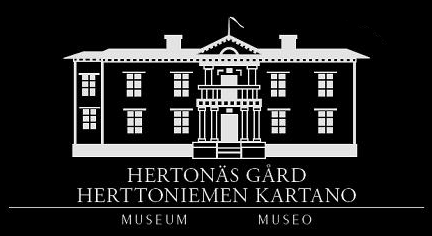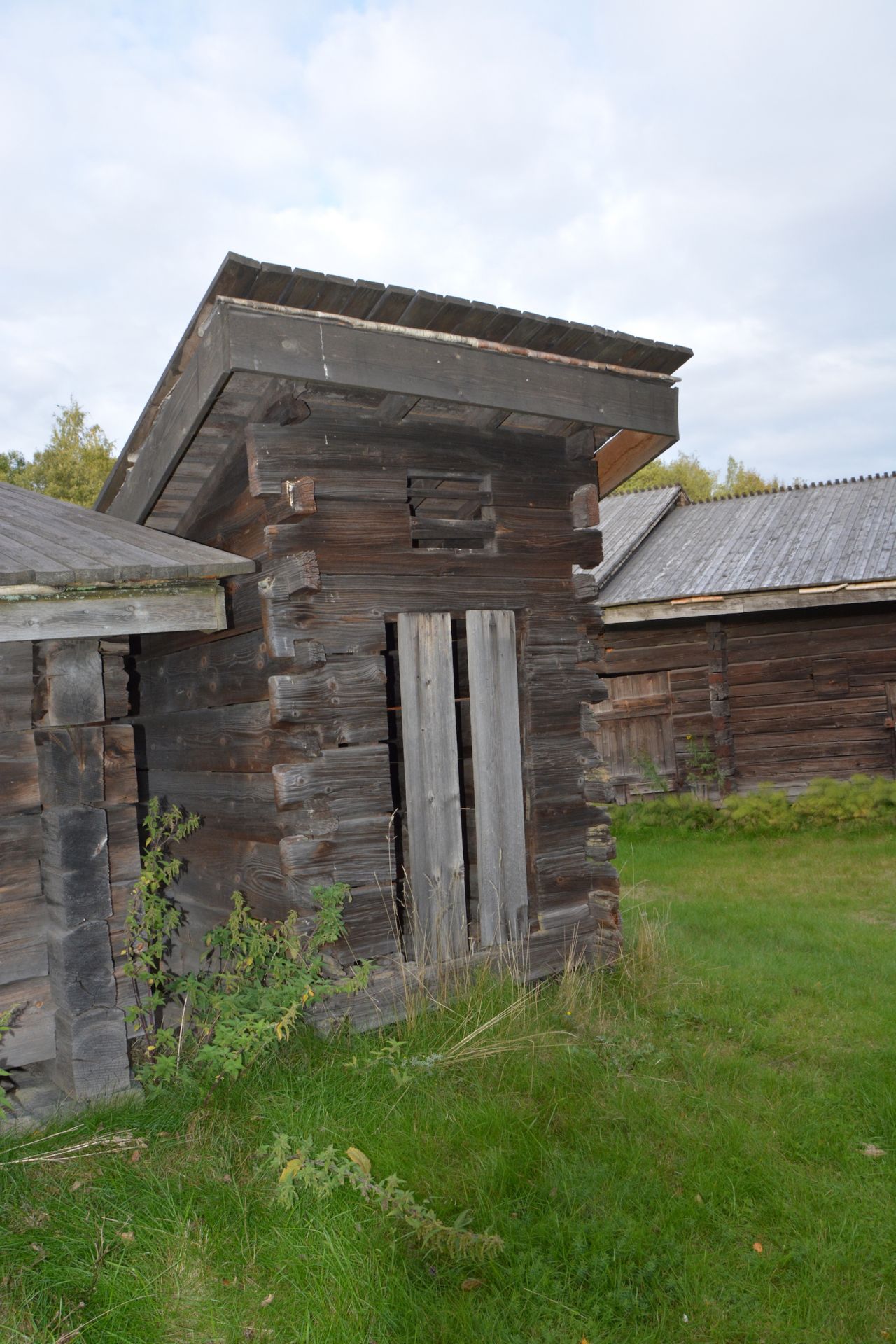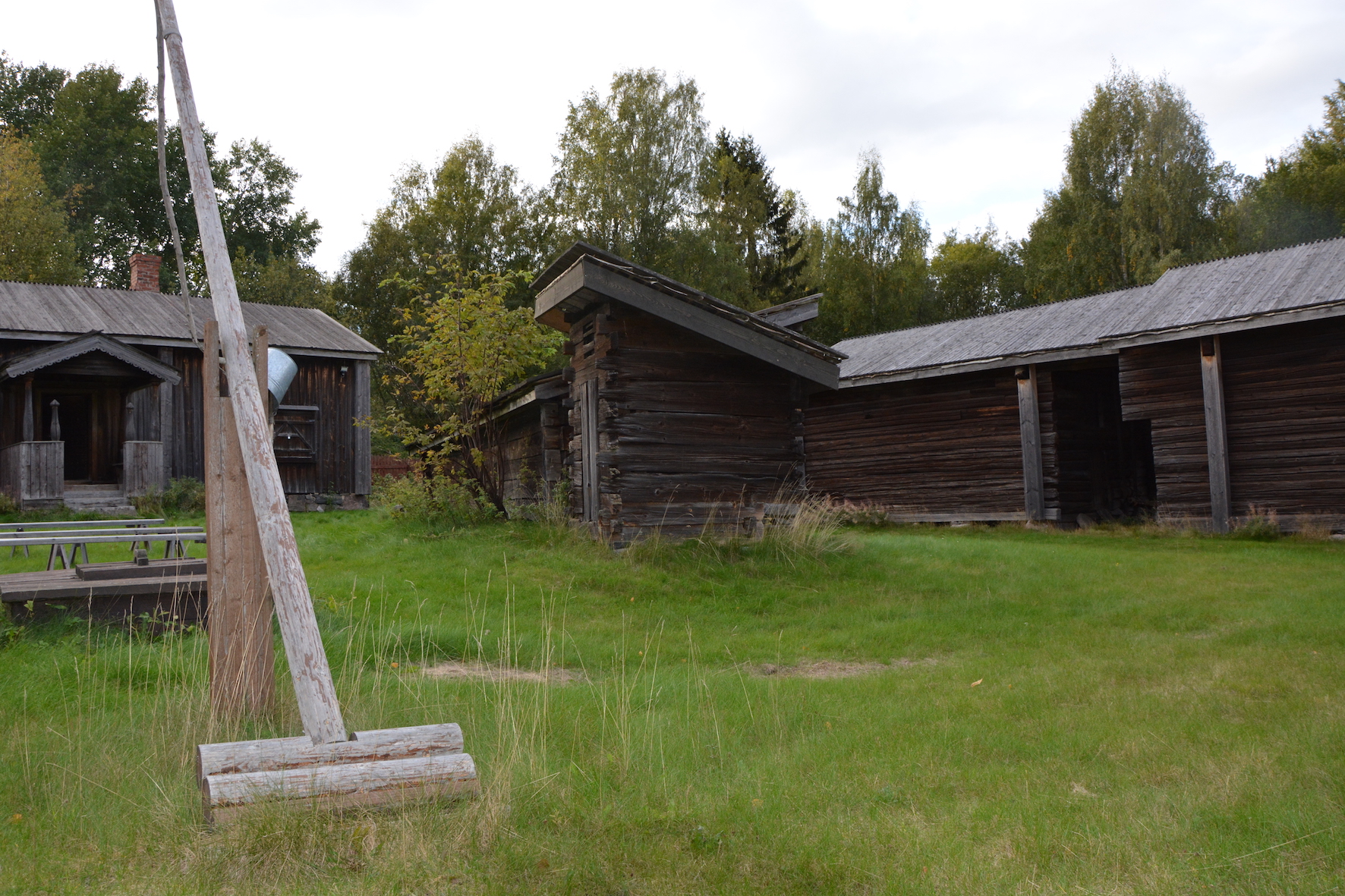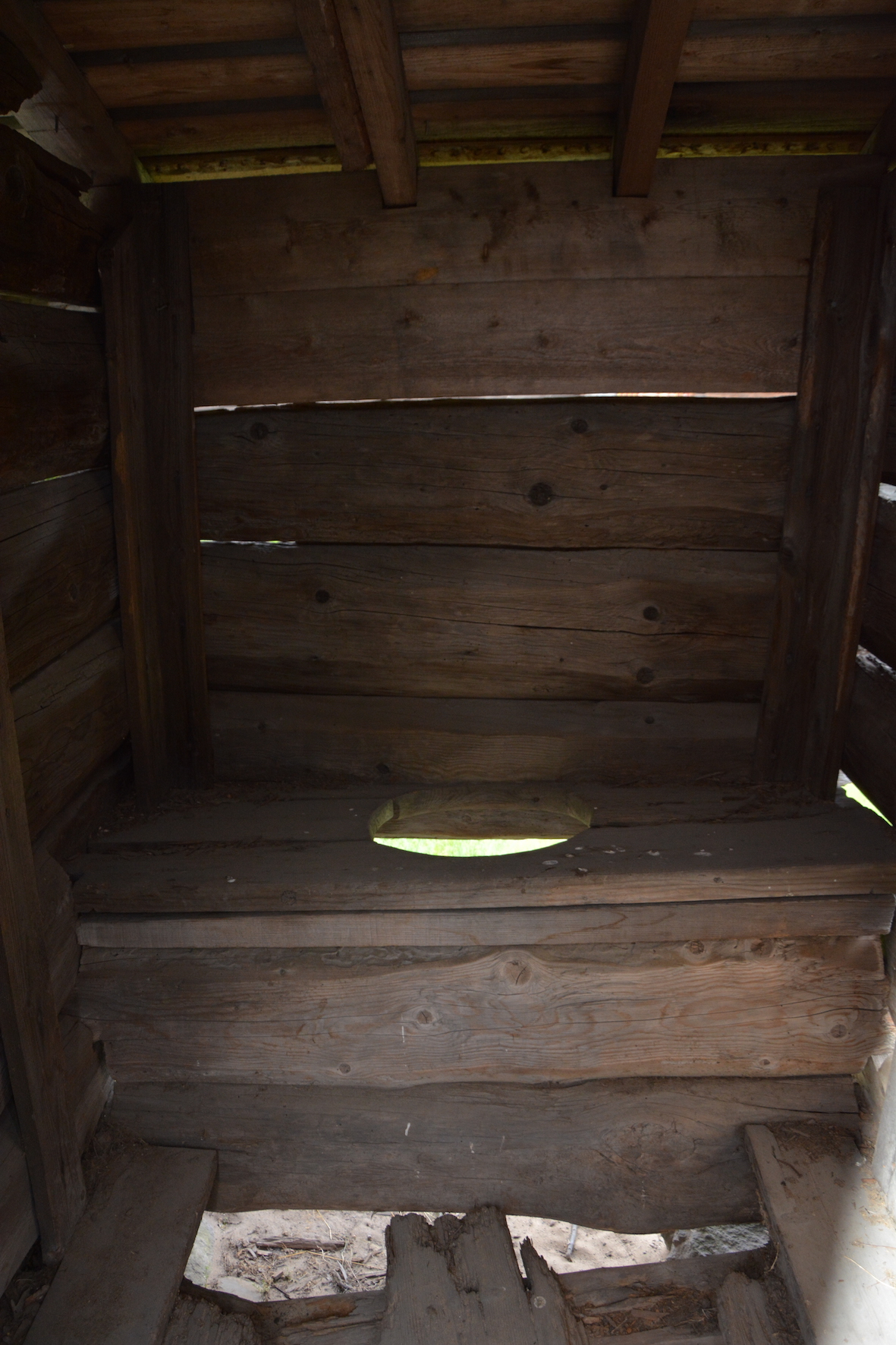A discussion about excrement and urine usually sters strong opinions in our present society. It is a theme that is often regarded as taboo. This changed as late as in the early 20th century. The outdoor toilet was often situated in the center of the yard, as it is situated today at the farmstead Knusbacka. In the old peasant society in the 19th century everybody lived densely with one another. The outdoor toilet thus became a forum for social contact, where youngsters of the same sex as well as close family members, such as mother and daughter och father and son, could interact undisturbed. This is why the outdoor toilet has two holes at Knusbacka. This is why the outdoor toilet was called privy. The nickname does not derive from people’s private needs, but from the private social interactions.
The outhouse at Knusbacka farmstead. Photo: EAW 2021.
When one was done with the needs at the privy it was time to swipe. How did the swiping take place in the 19th century? There was hardly any modern toiletpaper available at the outdoor toilet at Knusbacka. Instead of using modern toiletpaper people used old printed newspapers. It was also custom to use cheap books that one had finished reading. The production of early toilet paper for commercial use was invented by the American inventor Joseph Gayetty. He lived in the east parts of the USA in the mid-1800s. In the 1930s and 1940s toilet paper was still rare in the Nordic countries. Many thought that it was an unnecessary and expensive luxury that very few could afford. Commercially produced toilet paper became more popular in the Nordic countries as late as in the 1950s.
The outhouse (in the center) is placed in the middle of the yard. Picture: EAW 2021.
Large changes in mentalities regarding the outdoor toilets have occurred from the 1850s to the present. Nowadays many think that outdoor toilets are unhygienic. A big reason for this is the smell of the excrement and the paper that is left on the spot. In the toilet at home everything is transported away by a flush. This was not the case in the old rural world. In 1851 the world fair, The Great Exhibition of the Works of Industry of All Nations, was held at Crystal Palace in Hyde Park in London. Here the first water closets (wc) were presented to the world. Their use made the cities more hygienic. In the countryside people continued to use the outdoor toilets especially in the summers. But life became more private in the 20th century. Nowadays the outdoor toilets are regarded as something that has been flushed away from our modern world. Some people still have outdoor toilets, but merely in their summer cottages.
The outhouse has sometimes been restaurated and changed. Thus only one person could use it. The door has also been changed. Picture: EAW 2021.
Literature:
Backman, Sigbritt, Hertonäs gård - från säterier till museum, SOV, Helsingfors 2016.
Bäck, Kalle, Det svenska dasset – Inte bara en skitsak!, Borensberg 1994.
Translation: EAW 2021.



